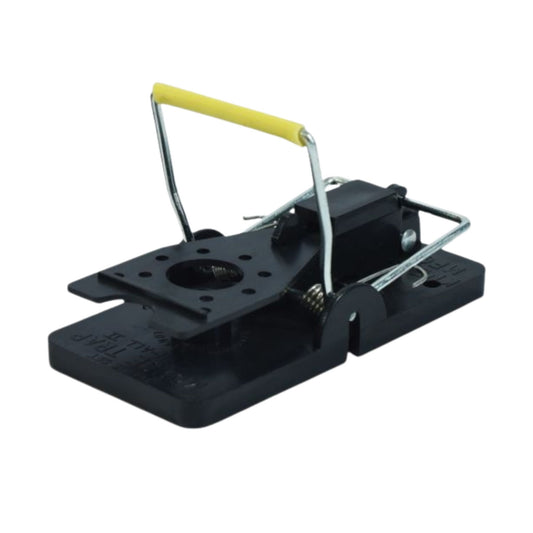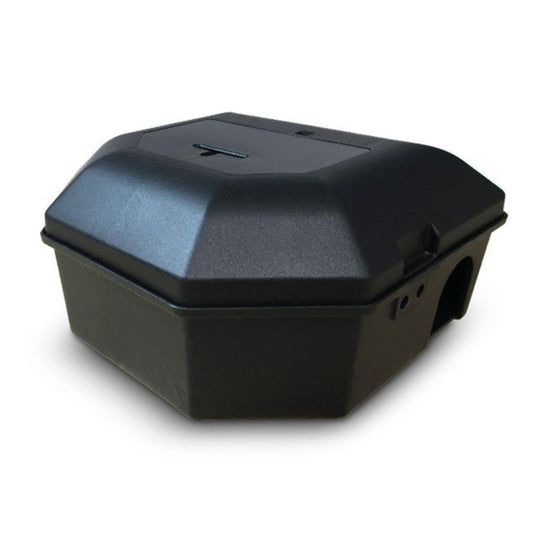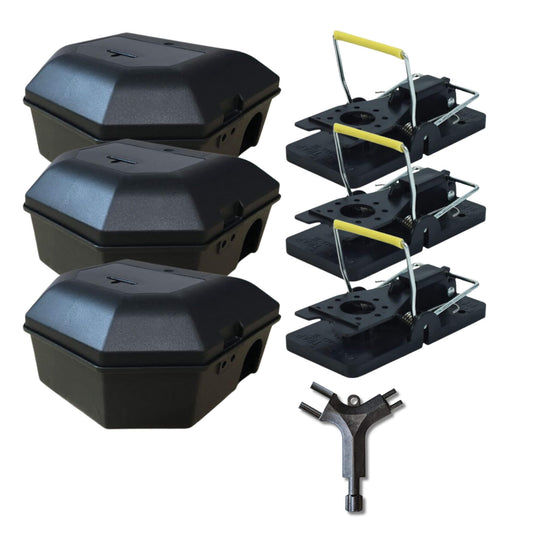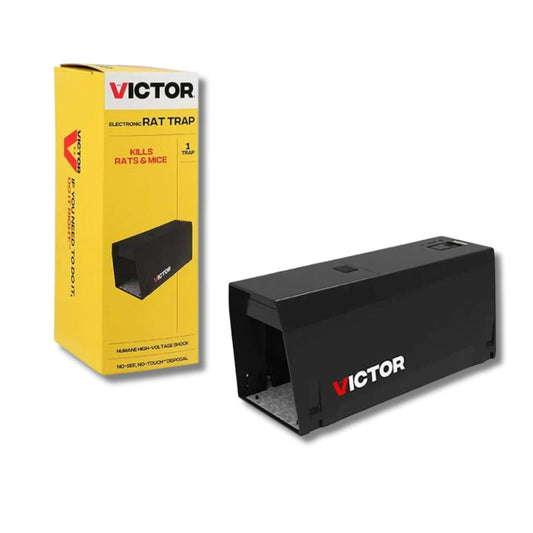
Common Types of Mice in the UK
Share
There are several common types of mice in the UK, with different appearances, sizes and lifespans. If you're curious about which type you've spotted in your home or yard or want to learn about UK mouse varieties so you can recognise them, check out our mouse identification guide.
Quick Check: Which Mouse Have You Seen? (30-second check)
- Spotted indoors (kitchen/loft/wall voids)? Most often a house mouse.
- Seen in garden/shed/garage (especially in colder months)? Often a wood/field mouse.
- Looks bigger with a pale/yellow "bib" at the neck/chest (mainly south/central England & Wales)? Could be a yellow-necked mouse.
- Tiny mouse in tall grass/reeds, with a tail it grips stems with? Harvest mouse (rarely a household pest).
| Species | Where you'll usually see it | Quick visual clues | Likely to infest homes? |
|---|---|---|---|
| House mouse | Indoors, year-round | More uniform grey-brown; tail looks less furry | Yes |
| Wood/field mouse | Gardens, sheds, garages; may come indoors in winter | Warmer brown; big eyes/ears; long tail | Sometimes |
| Yellow-necked mouse | Rural woodland edges (mainly south/central) | Can show a yellowish bib/collar; often larger | Occasionally |
| Harvest mouse | Tall grass, hedgerows, reedbeds | Very small; "grippy" tail | Very unlikely |
Important: If you suspect a dormouse (rounder face, golden fur, very bushy tail) don’t disturb or attempt to trap it—hazel dormice are protected by law and you may need specialist advice.
House Mouse

The house mouse has brown-grey fur with a long tail covered in hair which is thicker and rougher than the tails of other mouse types. House mice have large ears, small eyes, pointy noses, and tiny feet, which is different from field mice which have big back feet.
When it comes to how long they live, house mice can survive for about a year if they're outside but can live for up to three years if they find a cosy spot inside. House mice munch on about 3 grams of food daily and like to eat cereals as well as fruits, seeds, and grains.
Similar to other mice, house mice don't hibernate. Instead, they are highly adaptable, setting up home where it's warm and close to lots to eat, especially in places where people live.
Names: House Mouse, Common House Mouse, Domestic House Mouse
Colour: Brown-grey
Weight: 15-30g
Length: 6-10cm
Tail Length: 6-10cm
Body: Small head and lean body
Eyes: Small
Lifespan: 1-3 years
Eats: 2-3 grams per day comprising of cereals, fruits, seeds, nuts, and grains.
Droppings: 0.5 cm in length, dark with pointed ends
Field Mouse

The field mouse sports light red-brown fur paired with white feet and chest. These mice stand out with their oversized hind legs, which give them a bouncy walking motion, and a tail as long as their body. Typically, a field mouse lives for about a year due to predators and risky environments. Yet, in safer conditions, they can reach an age of three years.
As for their diet, field mice munch on seeds, fruit, berries, nuts, and mushrooms and occasionally even enjoy a snail. Field mice stay awake and are busy all winter. They don't sleep away during the cold months. Instead, they often sneak indoors for warmth and venture out in search of food when indoor supplies run low.
Like all rodents, mice can carry diseases and contaminate surfaces with urine/droppings. The risk to most households is low, but it’s still important to clean safely and avoid creating dust or aerosols when dealing with droppings.
Names: Field Mouse, Deer Mouse, Wood Mouse, Long-Tailed Field Mouse
Colour: Brown-grey with white feet and chest
Weight: 15-30g
Length: 10cm
Tail Length: 6cm
Body: Small head and body, typically larger than a house mouse
Eyes: Large
Lifespan: 1-3 years
Eats: 2-3 grams per day comprising of insects, cereals, fruits, seeds, nuts, and grains.
Droppings: 0.5 cm long, dark with pointed ends
Yellow-Necked Mouse

These mice are a bit larger than other UK mouse species and can reach a length of about 10 cm.
Generally, yellow-necked mice only live for 3 to 4 months with few reaching 1 year. They are renowned for their ability to acrobatically jump to escape predators such as owls, weasels and foxes. Yellow-necked mice can be found mainly in mature and ancient woodland in Southeast England, the Midlands and some parts of Wales. Regarding food, they like to munch on things like nuts, fruit, seeds, plant shoots, and invertebrates. While yellow-necked mice don’t hibernate in winter, they do cuddle together to stay warm, using each other’s body heat.
Names: Yellow-Necked Mouse, Yellow-Necked Field Mouse
Colour: Light brown, white underparts and a light yellow neck
Weight: 20-45g
Length: 10-12cm
Tail Length: 10-12cm
Body: Small pointy head and lean body
Eyes: Large
Lifespan: Up to 1 year
Eats: 2-3 grams per day comprising of invertebrates, fruits, seeds and green plants
Droppings: 0.6-0.7 cm long, sets hard
Harvest Mouse

The tiny harvest mouse holds the title of the smallest rodent in all of Europe and stands out as the only British rodent that can grip with its tail. This nifty skill lets it handle objects and zip through tall grass with ease. Speaking of life span, a harvest mouse usually lives for about 18 months, but they can enjoy up to 5 years when looked after in captivity.
Their diet is quite sweet, as they love munching on juicy fruits, seeds, and sometimes they'll snack on soft bugs like slugs or snails. When it gets cold, harvest mice lay low but they don't go into full hibernation. They prefer to keep snug in their nests, and they stock up on food to help them through the chilly season.
Names: Harvest Mouse
Colour: Golden-brown, pale grey/white underparts
Weight: 4-6g
Length: 5-7cm
Tail Length: 5-7cm
Body: Small head and body with a blunt nose and small hairy ears
Eyes: Small
Lifespan: 18 months to 5 years
Eats: <1 gram per day comprising of invertebrates, fruits and seeds
Droppings: 0.2 cm long and cylindrical
Found Mice in Your Home? Do This Next (Fast & Easy)
- Confirm activity: look for droppings, smear marks and gnawing near skirting boards and under units.
- Proof entry points: seal gaps around pipes, air bricks and broken vents (mice can squeeze through very small gaps).
- Trap smart: place traps tight to walls and "pinch points" (behind appliances, along skirting).
- Keep it safe: if children/pets are around, use a tamper-resistant bait station/trap box.
- Escalate when needed: if you're seeing daily activity, strong odour, or heavy contamination, it's usually quicker to bring in a professional.
FAQs: Types of mice in the UK
What's the most common mouse in UK homes?
In most UK houses and workplaces, the most common indoor pest species is the house mouse. If you're seeing activity in kitchens, cupboards, lofts or wall voids, that's usually the one.
What's the difference between a house mouse and a wood (field) mouse?
A quick way to think about it:
- House mouse: typically found indoors year-round.
- Wood/field mouse: usually outdoors (gardens, sheds, garages), but may come indoors in colder months.If you're unsure, focus on where you saw it (indoors vs outdoors) and look for fresh signs (droppings/gnawing) to confirm activity.
Do harvest mice come into houses?
Very rarely. Harvest mice live in tall grass, reedbeds and hedgerows and are unlikely to set up in buildings. If you've got repeated indoor signs, it's more likely house mouse (or occasionally wood/field mouse).
How can I tell a yellow-necked mouse from a wood (field) mouse?
Yellow-necked mice can be slightly larger and may show a pale/yellow "bib" across the chest, but it can be subtle. Range helps too - they're more common in southern/central areas and mature woodland edges. If you're seeing mice indoors, you're still most likely dealing with house mice.
What if I think it's a dormouse?
If you suspect a dormouse, don't try to trap or handle it. Dormice are a protected species and you may need specialist advice. If you're not sure, treat it as an identification issue first (photos can help) before taking any action.
Is it a mouse, vole or shrew?
Common mix-ups:
- Voles: rounder bodies, shorter tails, smaller ears; usually outdoors.
- Shrews: very pointed snout, tiny eyes, fast movement; they're insect-eaters.If the animal is repeatedly inside and you're finding droppings/gnawing, it's more likely a mouse.
Does the mouse species change how I should deal with it?
Yes - mostly because it tells you where to focus:
- House mouse: proof and trap indoors (kitchen, behind appliances, loft edges).
- Wood/field mouse: proof entry points and manage garden/shed/garage access (doors, gaps, stored food, bird seed).
Either way, the fastest plan is: remove food → proof gaps → place traps tight to walls → monitor and prevent return.
We go to great lengths to ensure that all our DIY mouse control products are effective, safe & easy-to-use. You may also find our expert guide useful if you want to learn more about getting rid of mice from your home or workplace.






